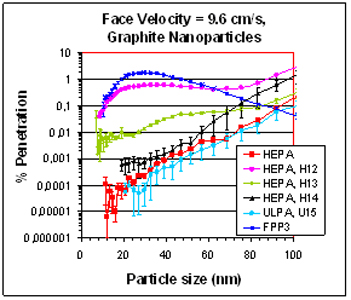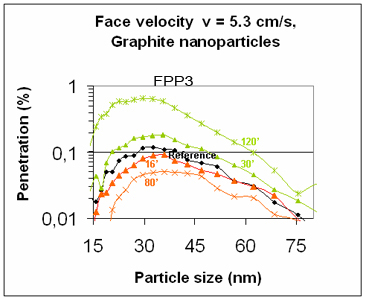
Example output for different environmental filters [L. Golanski et al., Human & Experimental Toxicology 28 (2009) 353-359].

Example evolution output for respiratory mask: dry condition and breathing condition [L. Golanski et al., Human & Experimental Toxicology 28 (2009) 353-359].
The effectiveness of Very High Efficiency filters (THE or HEPA) to the penetration of particles of graphite depends on the class of filter. On the range 10 - 100 nm, it has been verified that for a few filters, the smallest particles are more easily captured because of their speed and average route. The best performance is obtained by the HEPA H14 and ULPA U15, while an electrostatic filter FPP3 (used for a mask) is less efficient.
Masks test results
For electrostatic respiratory filters, the most penetrating particle size (MPPS) is around 30 nm: standardized measurement tests should be adapted from 30 nm to 600 nm.
In dry condition, the penetration of nanoparticles decreases with time. With humidity brought by breathing, the penetration of nanoparticles through the electrostatic media increases, close to the threshold value (1 %) defined for the FPP3 mask (NF EN149) after 2 hours of usage. In addition, the mask efficiency depends on the water tightness between the mask and the face.


